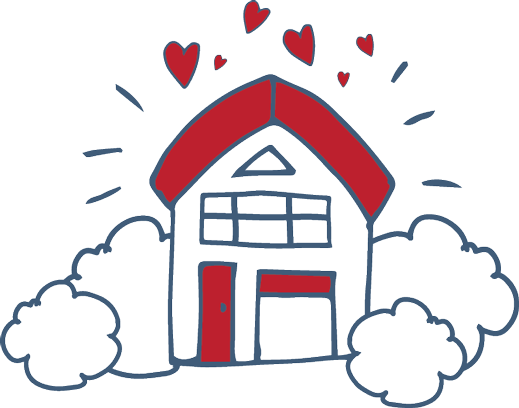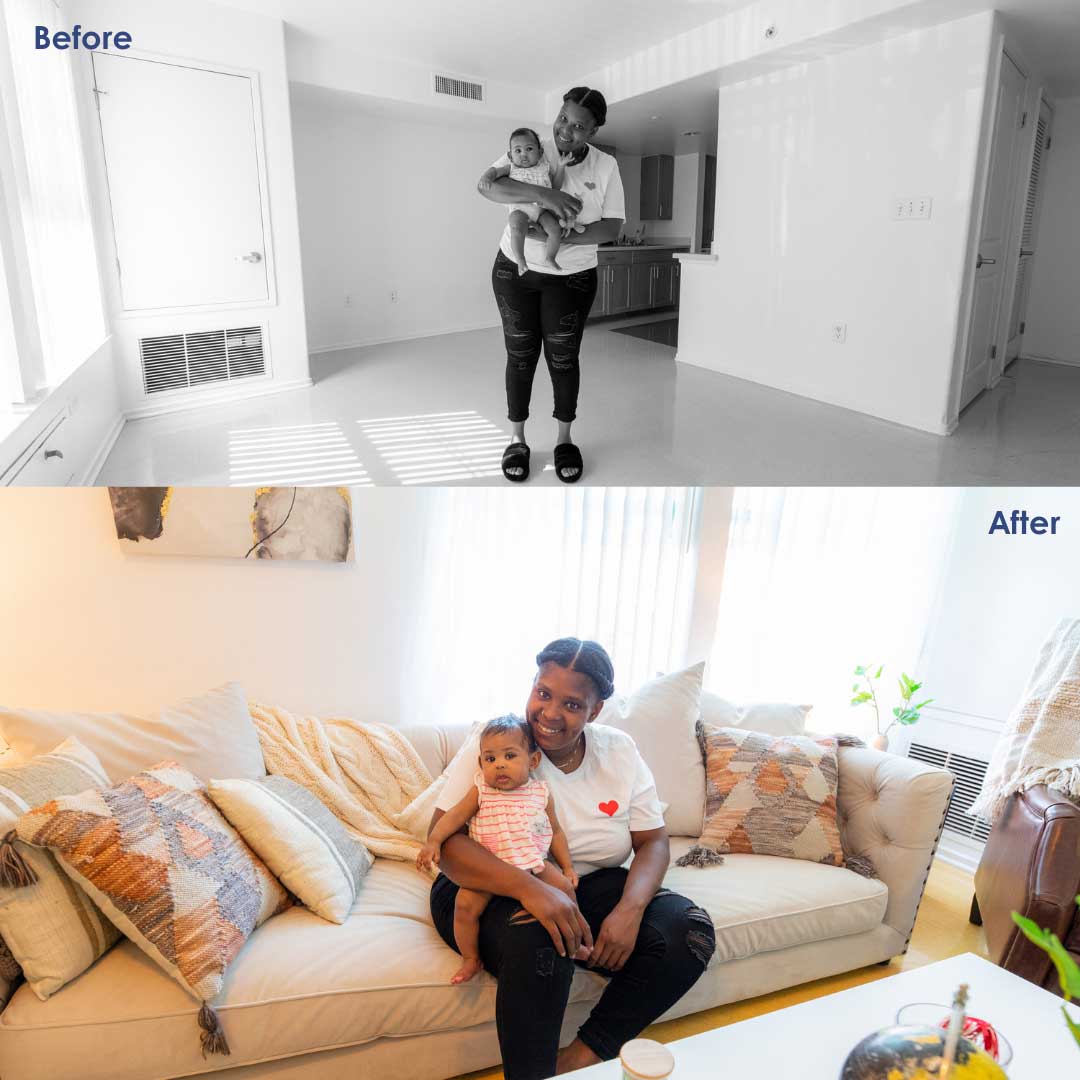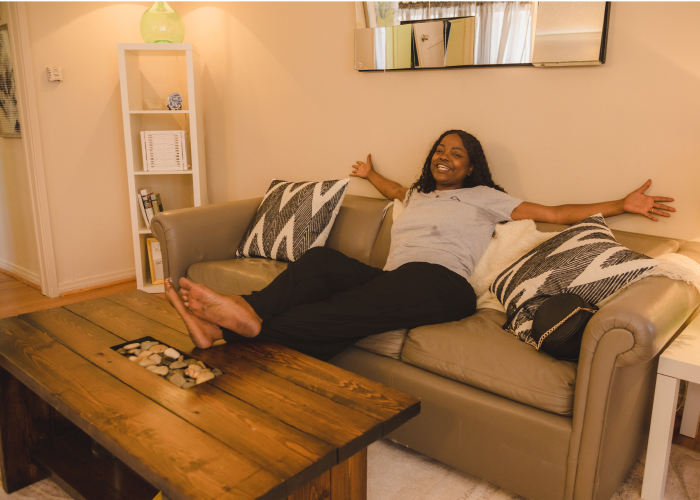
Home Determines How Successful, Happy, and Healthy We Are
The average person spends the largest percentage of their income on housing and the greatest amount of their time at home. There is strong empirical evidence characterizing housing’s relationship to health, and outcomes in employment and education. The quality of the home environment and its ability to function as a home directly affects health outcomes, as well as the quality of output at work and school.
For each of us, home is the center of our world. It is where we design and manifest our future. It is a predictable and secure place. It is where we manage our emotional and physical well-being. It is our centering place to build and grow healthy relationships, where we orientate ourselves, maintain order, organize our lives, and progress our productivity as employees and students. Home at its best, is a wellspring of inspiration to grow our confidence and empower us to go out into the world and strive to improve our lives. Home is the birthplace of how and where we can flourish.


Home: A Launchpad to Success
- According to the Neuroscience Institute, students and employees are more productive and better able to process information when living in an organized and functional home.
- Recent research by APS Fellow Eldar Shafir, of Princeton University, indicates that removing the financial burden of creating a home decreases the likelihood of an individual falling into the “scarcity trap” and increases the likelihood of escaping poverty and improving overall well-being.
- Environmental psychology has proven that we see ourselves the way that we see our environment and living in an uplifting and functional home increases success in work, education, relationships and elevates personal goals.
- A home environment that feels safe and reflects the personality of the individual helps to create agency, and according to positive psychology expert Martin Seligman, inspires efficacy, optimism, and imagination. Individuals who have a sense of agency and a positive outlook have stronger immune systems, fewer infections, their bodies heal faster, they have less inflammation and live 8 years longer on average.

Maslow’s Hierarchy of Needs
Self-Actualization
This is to become self-fulfilled and all that a person can be. For self-actualized individuals home is more than a place to live, it is a place where one can manifest one’s dreams.
Self-Esteem Needs
A degree of self-respect as well as respect for others and respect received from others. Being proud of one’s own home, creates self-esteem that emboldens self-respect and inspires respectful behavior to others and one’s environment. Mutual respect empowers the pursuit of career and educational goals.
Love and Belonging Needs
Having a space that feels like home affords a sense of belonging while being accepted and understood by the community affords the confidence to build and grow healthy relationships.
Physical Safety Needs
To be free of fear. When a person is in a state of fear, all concentration goes to calming the fear with no ability to focus on achieving other goals. For a person to develop fully as a human being there must feel safe, especially in their home.
Physical Survival Needs
The need for food, drink, shelter, sleep, and oxygen. If a person cannot satisfy their basic survival needs, they cannot move up the pyramid to meet additional basic needs.
Why Home is Especially Important for Former Foster Youth
- While homelessness is an obstacle a young person exiting foster care is challenged with, their entire lives have revolved around housing insecurity. For most young people who enter foster care, their parents’ challenges with housing or what happened in the “home” is why they entered the system.
- These young people endured deplorable living conditions, mostly due to poverty and/or mental illness, experienced by their parents.
- These conditions may involve infestations, dangerous animals, an absence of running water, heat, or bedding, or a single one-bedroom apartment occupied by 20+ individuals from multiple families.
- Housing issues may also involve co-located drug labs or gang territory, criminal activity involving deadly weapons, and all-night partying so extensive that children are unable to sleep.
- For most young people who entered and endured foster care, “home” is neither safe nor stable.
- These challenges often follow young people in the form of trauma and future difficulty obtaining housing.
- Often the most affordable housing may return the young person to the same neighborhood they once fled.
- Alternatively, even if housing is secured, furnishing the apartment, making it a home, and having the requisite resources to make it a lasting place to live is all but impossible.
- With these challenges so prevalent, A Sense of Home has become the gold standard for giving our kids the homes they truly deserve once and for all.
Empirical Evidence in Environmental Psychology
has found that an inhabitant flourishes in their home when the home reflects their personality and aspirations.
Each ASOH home creation is custom designed for the recipient based on their goals, favorite colors, passions, hobbies, aspirations, and tastes. The humanitarian approach to the design and the loving embrace by the community of volunteers is as impactful as eradicating furniture poverty:
- A high-quality new home environment enables the recipient to reimagine their future, establish more exalted goals, and become empowered to be the architect of their own destiny.
- After a lifetime of rejection, trauma, neglect, poverty, and hardships, each recipient is celebrated, honored, respected, valued, seen, heard, and understood.
- Receiving the attention of up to 30 strangers volunteering to create their home inspires the recipient to be a part of and invest their energy in the community.
- The love of strangers creates a shift in the recipient’s ability to trust and witnessing the vulnerability of strangers makes the recipient feel more confident in facing their own vulnerabilities.
- Witnessing the vulnerability and joy of strangers makes the recipient feel more connected to humanity and confident in facing their own vulnerabilities in order that they may heal.
- HOPE is activated. “Hope,” Jane Goodall explains “is what enables us to keep going in the face of adversity. You won’t be active unless you hope that your action is going to do some good. Hope is something we can cultivate. Hope is a survival trait. Without it we perish.”
- An immersive experience in understanding that radical transformation is possible.
- Moved by the experience, the recipient becomes a conduit for change — by paying it forward, helping create homes for their peers. The more they do, the more they understand that their voice matters and the more they feel connected to the community.


Crowdsourced from local businesses and individual donors, more than 250 pre-screened and high-quality household goods (otherwise destined for landfills) have been repurposed and installed in homes, allowing ASOH to create a custom-tailored home environment designed specifically to align with each recipient’s taste and style.












